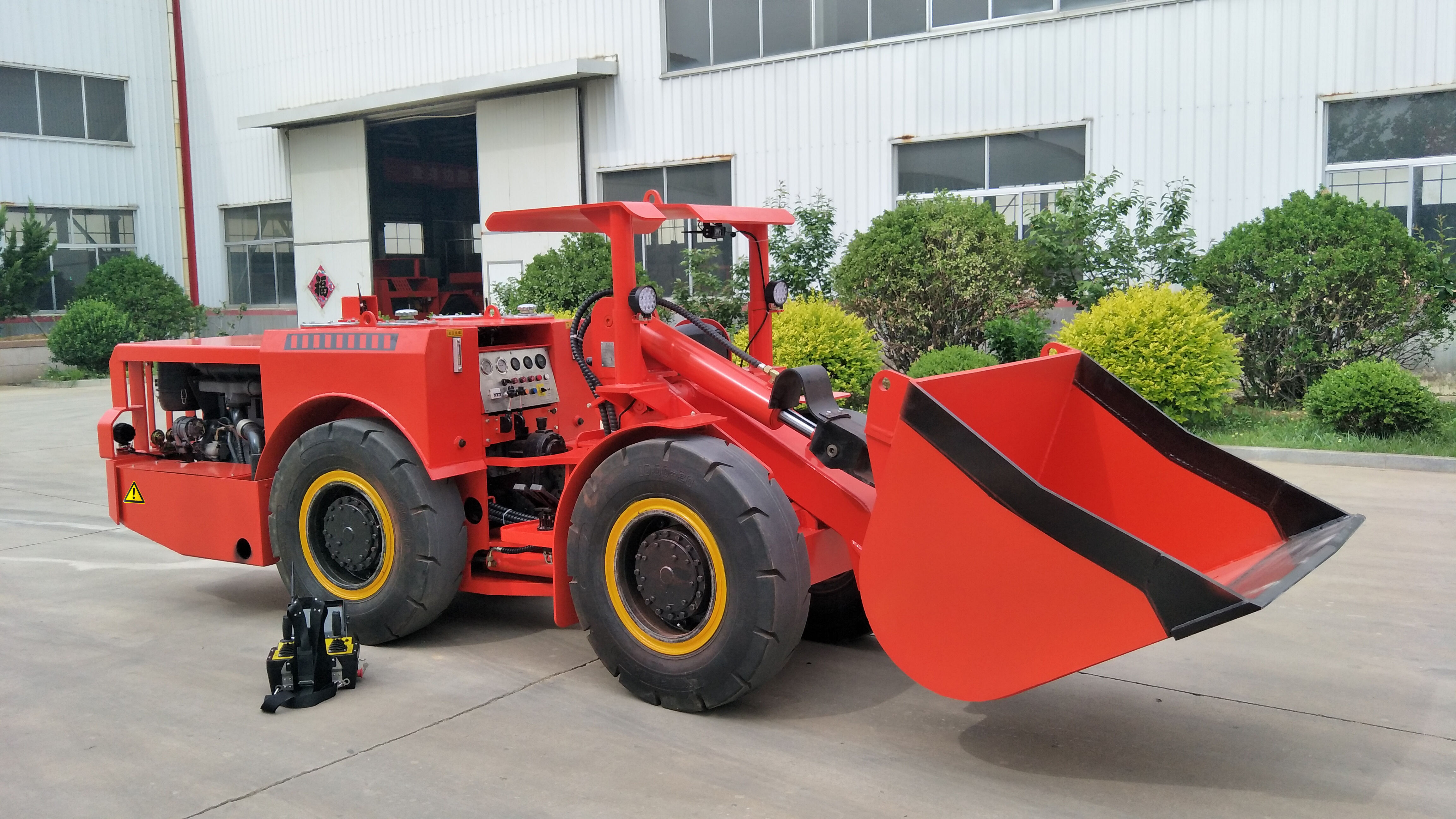Evolusi Peralatan Penambangan Bawah Tanah di Era Digital
Industri pertambangan telah mengalami transformasi luar biasa dengan integrasi teknologi otomasi scooptram. Kendaraan pemuat dan pengangkut bawah tanah yang kuat ini, yang sebelumnya dioperasikan secara manual, kini telah menjadi mesin canggih yang mampu terintegrasi secara mulus dengan sistem otomasi tambang modern. Seiring meningkatnya kompleksitas operasi penambangan dan semakin ketatnya persyaratan keselamatan, peran scooptram terotomasi menjadi semakin vital dalam menjaga efisiensi dan produktivitas operasi bawah tanah.
Konvergensi mesin yang kuat dan teknologi cerdas telah merevolusi cara perusahaan pertambangan menjalankan operasi harian mereka. Scooptram modern yang dilengkapi dengan sensor canggih, kemampuan pemantauan waktu nyata, serta fitur otonom sedang menetapkan standar baru dalam efisiensi penambangan, keselamatan pekerja, dan konsistensi operasional.
Komponen Inti Sistem Scooptram Terotomatisasi
Teknologi Sensor Canggih
Otomatisasi scooptram modern sangat bergantung pada rangkaian sensor canggih yang memberikan kesadaran lingkungan secara komprehensif. Ini mencakup sensor LiDAR untuk navigasi yang presisi, sensor jarak dekat untuk deteksi rintangan, serta sensor beban yang mengoptimalkan operasi pengisian bucket. Integrasi berbagai jenis sensor menciptakan sistem yang andal, mampu beradaptasi dengan lingkungan bawah tanah yang dinamis sambil mempertahankan efisiensi operasional.
Ekosistem sensor meluas melampaui navigasi dasar, menggabungkan sistem telemetri canggih yang terus memantau kesehatan mesin, distribusi muatan, dan kondisi operasional. Pengumpulan data secara real-time ini memungkinkan penjadwalan perawatan prediktif dan optimalisasi kinerja, secara signifikan mengurangi waktu henti dan biaya operasional.
Sistem Kontrol dan Infrastruktur Komunikasi
Inti otomatisasi scooptram terletak pada sistem kontrolnya yang canggih. Sistem-sistem ini memproses masukan dari berbagai sensor dan berkoordinasi dengan platform otomasi pusat tambang untuk menjalankan gerakan dan operasi yang presisi. Jaringan nirkabel bawah tanah berkecepatan tinggi memastikan komunikasi terus-menerus antara scooptram otomatis dan pusat kendali, memungkinkan penyesuaian secara real-time serta kemampuan pemantauan jarak jauh.
Sistem komunikasi yang tidak perlu dan protokol fail-safe memastikan bahwa scooptrams otomatis mempertahankan keamanan operasi bahkan dalam kondisi bawah tanah yang menantang. Pelaksanaan jaringan mesh dan penempatan titik komunikasi secara strategis di seluruh tambang memastikan konektivitas yang konsisten dan keandalan sistem.
Manfaat Operasional Sistem Scooptram Terintegrasi
Peningkatan Efisiensi Produksi
Ketika terintegrasi dengan baik dengan sistem otomatisasi tambang, scooptrams menunjukkan peningkatan yang luar biasa dalam efisiensi operasi. Siklus pemuatan dan penarik otomatis dapat dioptimalkan untuk produktivitas maksimum, dengan kinerja yang konsisten di beberapa shift. Penghapusan faktor kelelahan manusia dan kemampuan untuk bekerja terus menerus dalam kondisi yang tepat telah menyebabkan peningkatan produksi yang signifikan.
Integrasi digital memungkinkan pelacakan pergerakan material secara akurat dan pemantauan produksi secara real-time. Pendekatan berbasis data ini memungkinkan operasi penambangan untuk mempertahankan laju produksi yang optimal sambil meminimalkan keausan peralatan melalui parameter operasi yang terkendali.
Peningkatan Keselamatan dan Pengurangan Risiko
Integrasi teknologi otomasi scooptram telah secara signifikan meningkatkan keselamatan tambang dengan menghilangkan operator dari lingkungan berbahaya. Sistem otomatis dapat beroperasi di area yang baru diledakkan, zona dengan ventilasi buruk, atau dalam kondisi di mana keberadaan manusia akan berisiko. Sistem sensor canggih memberikan pemantauan terus-menerus terhadap kondisi lingkungan dan status peralatan, mencegah potensi kecelakaan sebelum terjadi.
Fitur keselamatan yang ditingkatkan mencakup sistem pemadaman darurat otomatis, kemampuan penghindaran tabrakan, dan pemantauan parameter operasi secara waktu nyata. Sistem-sistem ini bekerja bersama untuk memastikan bahwa scooptram otomatis beroperasi dalam batas aman sambil mempertahankan tingkat produktivitas.
Strategi Implementasi dan Praktik Terbaik
Perencanaan Integrasi Sistem
Integrasi scooptram otomatis yang sukses memerlukan perencanaan cermat dan pendekatan implementasi bertahap. Proses ini dimulai dengan penilaian menyeluruh terhadap infrastruktur tambang yang ada serta identifikasi peningkatan yang diperlukan untuk mendukung teknologi otomasi. Penyusunan jadwal implementasi dan program pelatihan yang terperinci memastikan transisi yang lancar serta gangguan minimal terhadap operasi yang sedang berjalan.
Perusahaan pertambangan juga harus mempertimbangkan integrasi scooptram otomatis dengan sistem manajemen armada yang sudah ada serta perangkat lunak perencanaan tambang. Pendekatan holistik ini memastikan semua sistem bekerja secara serasi untuk memaksimalkan manfaat operasional sekaligus menjaga standar keselamatan.
Pelatihan dan Adaptasi Personel
Transisi ke operasi scooptram terotomatisasi memerlukan investasi signifikan dalam pelatihan dan pengembangan personel. Operator harus dilatih untuk memantau dan mengelola sistem otomatis secara efektif, sementara tim pemeliharaan membutuhkan keterampilan baru untuk merawat komponen elektronik dan mekanik yang canggih. Pengembangan program pelatihan komprehensif serta prosedur operasi standar sangat penting untuk implementasi yang sukses.
Menciptakan budaya adopsi teknologi dan peningkatan berkelanjutan membantu memastikan bahwa personel di semua tingkatan menerima transisi ke operasi terotomatisasi. Pembaruan rutin dan sesi pelatihan penyegaran menjaga agar tim tetap up-to-date dengan kemampuan sistem dan praktik terbaik.
Tren dan perkembangan masa depan
Integrasi Kecerdasan Buatan dan Pembelajaran Mesin
Masa depan otomasi scooptram terletak pada integrasi kemampuan kecerdasan buatan dan pembelajaran mesin. Teknologi-teknologi ini akan memungkinkan operasi yang lebih adaptif dan cerdas, dengan sistem yang mampu belajar dari pengalaman serta mengoptimalkan kinerja secara real-time. Algoritma canggih akan meningkatkan efisiensi navigasi, prediksi perawatan, dan pengambilan keputusan operasional.
Pengembangan sistem berbasis AI akan mengarah pada operasi yang semakin otonom, dengan scooptram yang mampu membuat keputusan kompleks berdasarkan data lingkungan dan operasional real-time. Evolusi ini akan semakin meningkatkan produktivitas sekaligus mengurangi risiko operasional.
Konektivitas dan Analitik Data yang Ditingkatkan
Perkembangan terus-menerus teknologi komunikasi bawah tanah akan memungkinkan integrasi yang lebih canggih antara scooptram otomatis dengan sistem tambang secara keseluruhan. Kemampuan analitik data lanjutan akan memberikan wawasan yang lebih dalam mengenai efisiensi operasional, memungkinkan penjadwalan perawatan proaktif dan alokasi sumber daya yang optimal.
Penerapan jaringan 5G dan kemampuan IoT yang ditingkatkan akan memfasilitasi pemrosesan data dan pengambilan keputusan secara real-time, sehingga menghasilkan operasi otomatis yang lebih responsif dan efisien. Kemajuan teknologi ini akan terus mendorong peningkatan produktivitas dan keselamatan di pertambangan.
Pertanyaan yang Sering Diajukan
Apa tingkat otomasi yang saat ini dapat dicapai dengan scooptram modern?
Scooptram modern dapat mencapai berbagai tingkat otomatisasi, dari operasi semi-otonom dengan pengawasan manusia hingga operasi sepenuhnya otonom dalam kondisi penambangan tertentu. Tingkat otomatisasi tergantung pada tingkat kecanggihan sistem yang terpasang dan kemampuan infrastruktur tambang untuk mendukung operasi otomatis.
Bagaimana otomatisasi scooptram memengaruhi persyaratan perawatan?
Scooptram otomatis biasanya memerlukan perawatan yang lebih spesifik karena sistem elektroniknya yang canggih. Namun, alat ini sering mengalami keausan yang lebih rendah karena pola operasi yang konsisten dan kemampuan perawatan prediktif, sehingga berpotensi menurunkan biaya perawatan secara keseluruhan dan memperpanjang masa pakai peralatan.
Infrastruktur apa saja yang diperlukan untuk mendukung operasi scooptram otomatis?
Infrastruktur penting mencakup jaringan nirkabel bawah tanah yang andal, sistem pemantauan lingkungan, sistem kontrol terpusat, dan rangkaian sensor yang sesuai di seluruh lingkungan penambangan. Tambang juga harus memiliki sistem daya cadangan dan jaringan komunikasi ganda untuk memastikan operasi otomatis yang konsisten.

